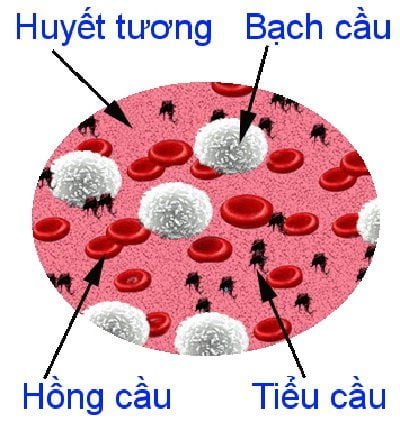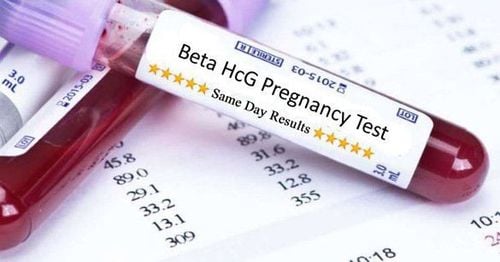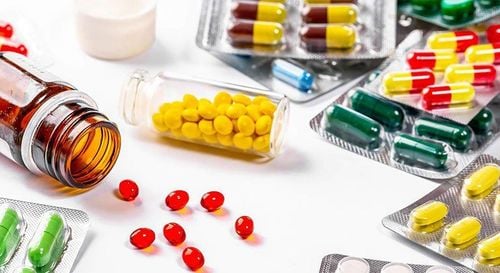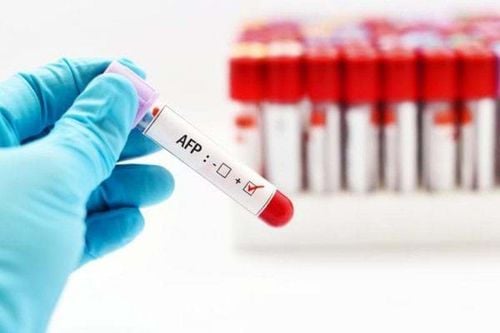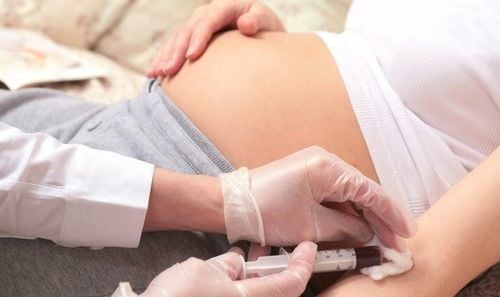This is an automatically translated article.
Abnormal antibody identification is an important pre-transfusion test. The test is conducted mainly in people who have received blood transfusions many times, women with a history of childbirth, pregnancy, and multiple miscarriages.1. What is an Abnormal Antibody Test?
In the blood, there are foreign antibodies because the antigens present on the donor's red blood cells are not present on the recipient's red blood cells. When the donor's red blood cells are transfused into the recipient's body, it stimulates immune cells to produce specific antibodies against these antigens. If a person with abnormal antibodies receives a blood transfusion and the donor's red blood cells have the corresponding antigen, a transfusion reaction will occur.
Abnormal antibody identification is a test to look for the existence of abnormal antibodies in the body, to prevent the risk of antigen-antibody reactions that cause life-threatening hemolysis.
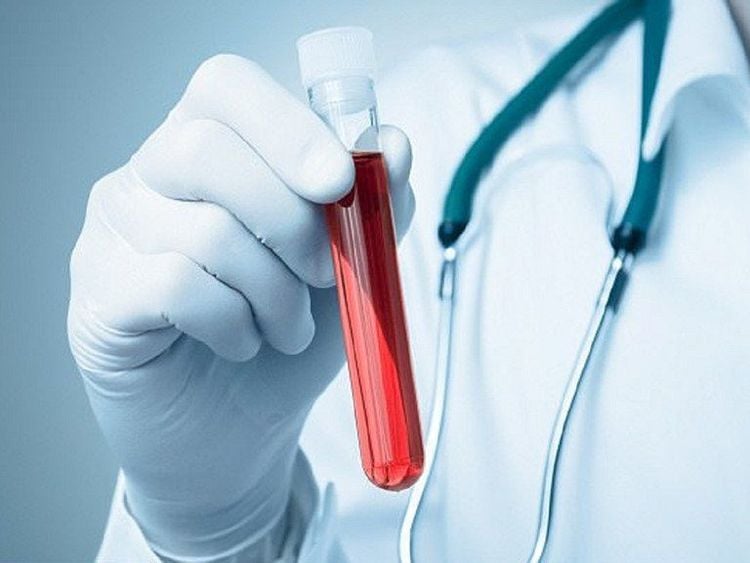
Xét nghiệm định danh kháng thể bất thường nhằm tìm kiếm sự tồn tại của kháng thể bất thường trong cơ thể
2. Indication of abnormal antibody identification test
In order to ensure the safety of blood transfusion, when receiving blood transfusion, abnormal antibody screening test is mandatory for the following subjects:
Have a history of blood transfusion Women with a history of pregnancy, childbirth, multiple miscarriages Repeated blood transfusion in some diseases causing chronic anemia such as gastrointestinal diseases (gastric perforation, gastric ulcer, etc.) and blood diseases. For people who have blood transfusions for many consecutive days, the test is carried out periodically no more than every 7 days.
3. What is the abnormal antibody identification test for?
Abnormal antibody identification is an important test for patients who have had multiple blood transfusions before receiving their next blood transfusion. Blood transfusion is the way for foreign antigens to enter the body. That's because when a blood transfusion is done, there is an immune reaction between the donor's blood cells and the recipient's blood cells.For women with a history of miscarriage, multiple births, testing is also needed to look for abnormal Rh antibodies in the mother's blood, which can lead to hemolysis, anemia, and life-threatening problems in the fetus. .
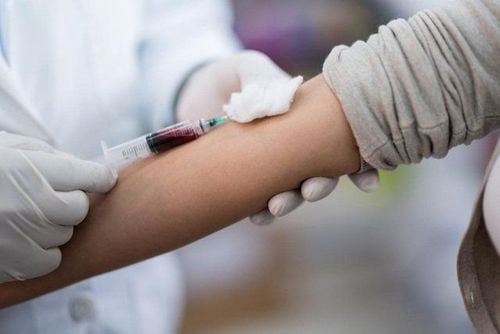
Xét nghiệm định danh kháng thể bất thường cần thiết được tiến hành trên phụ nữ có tiền sử sảy thai, sinh nở nhiều lần
4. Abnormal antibody detection technique
4.1 Prepare necessary instruments, chemicals and biological products for testing
Tools:
Glass test tube size 12x75mm Test tube holder Rectangular enamel tray size 25x30 cm Glass beaker with 500 ml automatic Pipette marker pen, assorted cone tip. Chemicals:
Physiological saline, concentration 0.9% Distilled water Red blood cell panel for abnormal antibody identification of the National Institute of Hematology and Blood Transfusion AHG (Coombs) gelcard and Neutral gelcard. Specimen:
Blood tube anticoagulated with EDTA: 2 ml. Blood tube without anticoagulation: 5 ml. Consumables: Record of results, test cards, paper caps, masks, gloves, costumes.
4.2 Receive specimen and request form for abnormal antibody identification test
Check and compare patient information on blood tubes, test sheets, quantity and quality of blood samples.
4.3 Preparation of serum samples and patient red blood cells and abnormal antibody identification red blood cells 0.8%
Prepare 1,000 μl of LISS solution, 10 μl of O1 to O10 mass red blood cells, and the patient's red blood cells. Centrifuge the patient's non-anticoagulant blood tubes to separate serum (2000 rpm x 3 minutes).4.4 Technical implementation
4.4.1 Identification of abnormal antibodies at room temperature 220C
The identification of antibodies is carried out in the following order:
Numbered from O1 to O10 and one well for self-control on saline gelcard, followed by patient information and test date Test on gelcards Open the protective sheet and cover the gel columns in accordance with the regulations. Add 50 l of the above prepared 0.8% abnormal antibody identification panel red blood cell solution in order to the respective gelcard wells. from O1 to O10 Add 50 μl of the above prepared 0.8% patient red blood cell solution to the autologous control gelcard well Add 25 μl of the patient's serum to all of the above gelcard wells Incubate the gelcard at room temperature for 15 minutes Centrifuge the gelcard for 10 minutes with a dedicated gelcard centrifuge Read the results according to the instructions of the biological product manufacturer
4.4.2 Identification of abnormal antibodies at 370C and anti-human globulin
Numbered O1 to O10 and 1 autologous control well on the AHG gelcard. Next is to write patient information and test date on the gelcard. Open the protective sheet to cover the gel columns in accordance with regulations. In turn, add 50 μl of red blood cell solution to screen for abnormal antibodies 0.8%, respectively. Prepare the above into the respective gelcard wells in order from O1 to O10 Add 50 μl of the 0.8% patient red blood cell solution prepared above into the autologous control gelcard well Add 25 μl of the patient's serum into all of the above gelcard wells Incubate the gelcard at 370C for 15 minutes with a dedicated gelcard incubator Centrifuge the gelcard plate for 10 minutes with a dedicated centrifuge Read the results according to the instructions of the manufacturer of the biological products General Hospital Vinmec International Department is one of the hospitals that not only ensures professional quality with a team of leading medical doctors, a system of modern equipment and technology, but also stands out for its examination, consultation and treatment services. comprehensive, professional; civilized, polite, safe and sterile medical examination and treatment space. Customers when choosing to perform tests here can be completely assured of the accuracy of test results.
Customers can directly go to Vinmec Health system nationwide to visit or contact the hotline here for support.
MORE:
RH blood group test: What to watch out for What are antibodies? Role and formation of antibodies Role of blood group determination before blood transfusion





